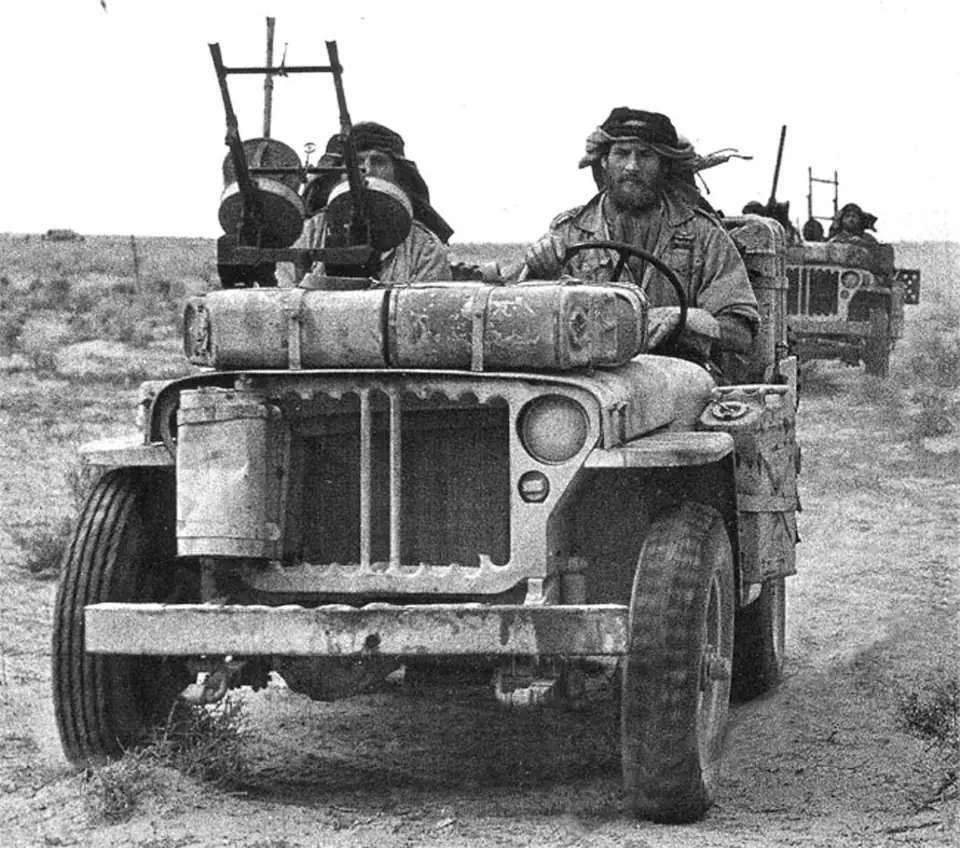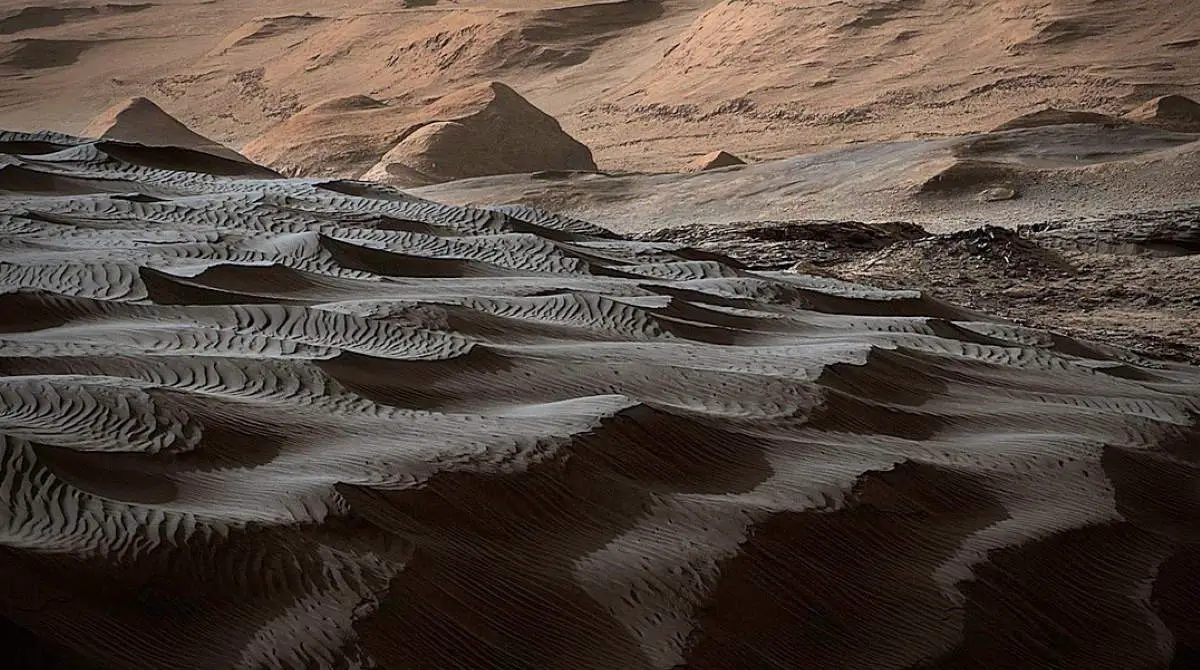In November 2015, NASA’s Curiosity Mars Rover started exploring the Bagnold Dunes, a 35-kilometer-long (about 22 miles) and 1-2 km wide (0.62-1.25 mi) group of dark grey dunes in the Gale Crater on Mars, on the northwestern flank of Mount Sharp. The dunes are named after the 20th-century desert explorer, geologist, and soldier Ralph Alger Bagnold (3 April 1896- 28 May 1990), who staged the first recorded East-to-West crossing of the Libyan Desert in 1932. Curiosity’s exploration of the area continued for about 1.5 years, ending in April 2017.
Curiosity’s exploration was the first time ever that scientists have explored an active dune system on another planet.
The samples taken by the Curiosity Rover in the dunes contained organic compounds, according to a research paper published on November 1, 2021. Please note that detecting organic compounds doesn’t automatically means there was life on Mars.

According to NASA, “…[Curiosity’s] journey through the Bagnold Dunes has helped advanced our understanding of how winds shape modern Martian landscapes, and the properties of windblown materials, in the form of both the active Bagnold dunes and in ancient Martian dunes now preserved as rock in units such as the overlying geological formation called the Stimson formation at Gale crater.”


Ralph Bagnold
The Bagnold Dunes are named after Brigadier Ralph Alger Bagnold, OBE, FRS, (3 April 1896 – 28 May 1990) was an English 20th-century desert explorer, geologist, and also a soldier who served in both World Wars. He was the first person to cross the Libyan Desert from East-to-West in 1932.
During World War I, he spent three years in the trenches in France. After the war, he studied engineering at Gonville and Caius College, Cambridge University, obtaining an MA before returning to active duty with the British Army in 1920.
In 1932 he explored the Mourdi Depression, in present-day Chad, and found implements dated to the Palaeolithic period in the valley. Bagnold wrote of his travels in the book Libyan Sands: Travel in a Dead World (first published 1935 and reprinted by Eland in 2010).
He is credited with developing a sun compass, a surveying instrument that makes use of the sun’s direction instead of magnetism, which is a useful device in the Libyan Desert because large iron ore deposits found in the desert areas, also large metal vehicles can affect the traditional magnetic compass.

Bagnold and his friends were also the first who began the practice of reducing tire pressure when driving over loose sand to get better traction.
He then served in the Second World War. He wrote:
“Never in our peacetime travels had we imagined that war could ever reach the enormous empty solitudes of the inner desert, walled off by sheer distance, lack of water, and impassable seas of sand dunes. Little did we dream that any of the special equipment and techniques we had evolved for very long-distance travel, and for navigation, would ever be put to serious use.”
He formed a military unit in July 1940 with the name Long Range Desert Group (L.R.D.G.).
On 7 June 1944, Bagnold retired from the British Army with the end of military operations in North Africa after the Axis powers’ defeat in that theatre. and returned to his scientific interests, being elected to a Fellowship of the Royal Society in the same year.
After the war, Bagnold continued to work in the field of geological science. He published academic papers into his nineties. He made significant contributions to the understanding of desert terrains such as sand dunes, ripples, and sheets. He developed the dimensionless “Bagnold number” and “Bagnold formula” for characterizing sand flow.
Ralph Bagnold died at Hither Green (a district in south-east London) on 28 May 1990 at the age of 94.
Sources
- Bagnold Dunes on Wikipedia
- Ralph Bagnold on Wikipedia
- Gale Crater on Wikipedia
- Curiosity Rover on Wikipedia
- “Recap of the Bagnold Dune Investigation” on the NASA Mars website
- “Curiosity’s Bagnold Dunes Campaign: Two Types of Dunes” on the NASA JPL website
- Namib dune, Gale Crater. Image by Peter D. Tillman on Flickr
- Study: “Geochemical variation in the Stimson formation of Gale crater: Provenance, mineral sorting, and a comparison with modern Martian dunes” on the Science Direct website
- Space Shuttle Endeavour’s Touchdown Meets Columbia’s Salute [An amazing photo from the past] - February 29, 2024
- Moon Landings: All-Time List [1966-2024] - February 23, 2024
- From Orbit to Ordinary: 10 Earthly Applications of Space Technology - January 23, 2024
